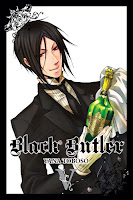 Author: Kazuya Kudo
Author: Kazuya Kudo
Illustrator: Naoki Urasawa
U.S. publisher: Viz Media
ISBN: 9780929279398
Released: December 1990
Original run: 1986-1988
I was very excited when Naoki Urasawa was selected as the subject of February 2013’s Manga Moveable Feast. One of the major reasons that I developed an obsession with manga is thanks to Urasawa and his series Pluto, a reimagining of one of Osamu Tezuka’s most popular Astro Boy stories. After reading Pluto, I immediately started to look for more of his work, which led to my discovery of Pineapple Army—his first work to be published in English. Viz Media released ten issues of Pineapple Army between 1988 and 1989 before publishing a collected volume in 1990. Pineapple Army, written by Kazuya Kudo and illustrated by Urasawa, is an eight volume series in Japan, originally serialized between 1986 and 1988. The English-language edition of Pineapple Army selects ten stories from throughout the series’ original run.
Jed Goshi is a formidable man. He’s an ex-marine, an ex-mercenary, a Vietnam war hero, an explosives expert, an exceptionally capable strategist, and an incredibly skilled combatant. Goshi now lives in New York City where he is a part of the Civilian Defense Forces, instructing amateurs in military tactics and teaching people how to fight for themselves. Often the cases he takes on are those that have little chance of success: four orphaned girls threatened by organized crime, a cowardly father and son being targeted by an assassin, a young woman in Latin America trying to rescue her kidnapped father, and so on. Even when Goshi is on vacation or out on a date he can’t seem to avoid being drawn into some sort of conflict. Events don’t always play out well but one thing is certain: Goshi is very good at what he does.
Pineapple Army is one of Urasawa’s earliest professional works. While the influence of other artists like Katsuhiro Otomo is fairly obvious, especially in the character designs, the beginnings of Urasawa’s own personal style can also be seen. Urasawa’s semi-realistic illustrations work well for Pineapple Army. Although there is plenty of action, the manga is very character driven. The realism of Urasawa’s artwork helps to keep even the more outrageous elements of the story grounded and the characters, particularly Goshi, believable (at least for the most part). He excels in creating memorable and expressive faces. Urasawa’s action sequences are great, too, everything from hand-to-hand combat to flying bullets and exploding grenades. The scenes are dynamic—at times even cinematic—clear, and easy to follow.
For the most part, the ten stories collected in Pineapple Army stand fairly well on their own. Still, it can be ocassionally awkward as the overarching plot of the series is obscured and some of the side characters are taken out of context. However, it’s Goshi who is the most important to Pineapple Army. Each story reveals a little more of his past and who he is as a person. I want to know more, though. Goshi is an appealing character. He has principles and a strong sense of justice. While he is capable and willing to resort to violence, he’s not a warmonger. It is very clear that he cares about people. But even so, Goshi has not been able to return to a normal civilian life. The same goes for most of the other war veterans that Goshi encounters in Pineapple Army, often as antagonists. I originally picked up Pineapple Army because of Urasawa’s involvement, but I’ve come to appreciate it for Kudo’s writing as well. Sadly, I doubt that any more of the series will ever be released in English, but I’m glad to have at least this one volume.














